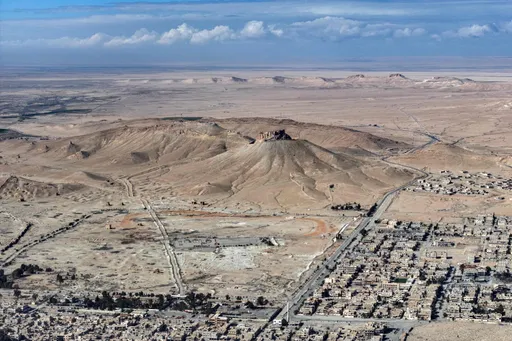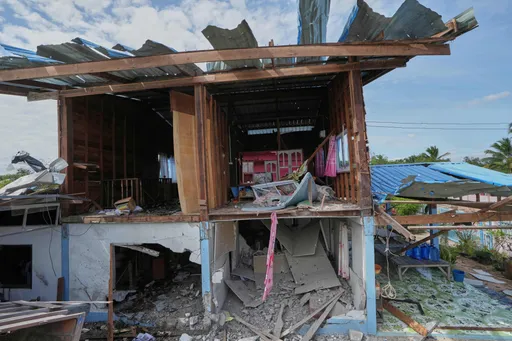Tensions flared up once again along the disputed border between India and China after a scuffle between troops of the nuclear-armed neighbours in the Tawang sector of India’s Arunachal Pradesh state, two years after deadly border clashes sparked heightened hostilities between the neighbours.
The troops engaged in “hand-to-hand fighting” last week that led to an undisclosed number of injuries on both sides, the Indian army said.
India’s Defence Minister Rajnath Singh told parliament on Tuesday that the latest violence was sparked after Indian troops stopped Chinese forces from entering Indian territory last week.
Afterwards, “both sides immediately disengaged from the area”, and a meeting between regional commanders was held to discuss the issue, according to the Indian army.
But China’s foreign ministry spokesman Wang Wenbin countered the Indian version, saying that Indian troops “illegally crossed the border”, adding that the “border situation is stable overall.”
The incident raised fears of a repeat of the bloody clashes of 2020 along another section of the disputed border drawn by the British colonial rulers.
Here’s how the border dispute has shaped ties between the Asian neighbours:
Disputed Line of Actual Control
The two neighbours fought a bitter war in 1962 that spilled into Ladakh, where India lost a portion of land called Chinese-administered Kashmir, or Aksai Chin. The two sides have been trying since the early 1990s to settle their dispute without success.
The most serious dispute is over China’s claims that India’s northeastern state of Arunachal Pradesh is part of Tibet, which India rejects.
China claims about 90,000 square kilometres of territory in India’s northeast, while India says China occupies 38,000 square kilometres of its territory in the Aksai Chin Plateau in the Himalayas, a contiguous part of India-administred Kashmir.
Since the war, India and China have had simmering disputes along the de facto border known as the Line of Actual Control (LAC) – a 3,800-kilometre frontier between the Asian giants.
Deadly clashes of 2020
A standoff began in early May of 2020 when large contingents of Chinese soldiers entered deep inside Indian-administered Kashmir’s Ladakh region at three places, erecting tents and posts.
Indian officials said the Chinese soldiers ignored repeated verbal warnings to leave, triggering shouting matches, stone-throwing and fistfights.
China said its moves came in response to India’s construction of defence facilities across the frontier into Chinese territory in the Galwan Valley region. India also mobilised thousands of soldiers and armouries.
In August, the crisis in the remote region of eastern Ladakh entered a new phase when the Indian army claimed it pushed back an attempt by the People’s Liberation Army (PLA) to alter the LAC in a new area on the southern bank of Pangong lake.
Indian officials alleged that 500 Chinese troops tried to cross into Spanggur, a narrow valley near the village of Chushul, and three hours of hand-to-hand combat ensued.
The Indian defence ministry accused the Chinese army of carrying out “provocative military movements” on the intervening night of August 29 and 30.
Overall, the clashes led to the death of 20 Indian soldiers and an undisclosed number of Chinese troops.
READ MORE:India and China refuse to back down as border tensions ramp up
Diplomacy attempts
Tensions at the border in 2020 eased after several rounds of talks, and the two sides stepped back. But the situation has not yet been fully resolved, and the two sides have increased military deployments at the border.
India’s foreign minister told parliament last week, before the latest fighting, that relations with China cannot go back to normal without peace on the border.
In September, India’s foreign ministry said that Indian and Chinese soldiers would disengage from the Gogra-Hot Springs area in Ladakh in the western Himalayas. China confirmed the pull-out.
Prime Minister Narendra Modi and Chinese President Xi Jinping exchanged courtesies at the end of a G20 dinner in Indonesia last month. However, the two leaders have not held bilateral meetings since the 2020 clashes.
Impacts on trade, business
The border tensions have had an impact on both countries’ economies. The trade deficit between the neighbours has ballooned, with government data showing a multi-year high figure of $73.31 billion for 2021-22.
India imports a host of goods and raw materials from its eastern neighbour, including hardware for upgrading its telecommunications sector and raw materials for its pharma industry.
India’s imports from China surged to $94.57 billion during 2021-22, and data shows $60.27 billion worth of goods have been imported so far this year.
In addition, many Chinese companies have struggled to do business in India, significantly after India tightened investment norms and banned more than 300 Chinese apps since 2020, including popular ones such as TikTok.
Chinese smartphone maker Xiaomi Corp was the latest to shut down its financial services business in India four years after its launch.
READ MORE:India seeks to descalate tensions with China after deadly border clash
























